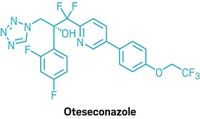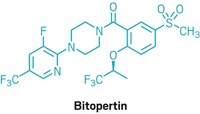Advertisement
Grab your lab coat. Let's get started
Welcome!
Welcome!
Create an account below to get 6 C&EN articles per month, receive newsletters and more - all free.
It seems this is your first time logging in online. Please enter the following information to continue.
As an ACS member you automatically get access to this site. All we need is few more details to create your reading experience.
Not you? Sign in with a different account.
Not you? Sign in with a different account.
ERROR 1
ERROR 1
ERROR 2
ERROR 2
ERROR 2
ERROR 2
ERROR 2
Password and Confirm password must match.
If you have an ACS member number, please enter it here so we can link this account to your membership. (optional)
ERROR 2
ACS values your privacy. By submitting your information, you are gaining access to C&EN and subscribing to our weekly newsletter. We use the information you provide to make your reading experience better, and we will never sell your data to third party members.
Pharmaceuticals
Fragment Is at Least as Good as Whole
A small portion of thiostrepton is as active as the antibiotic itself
by A. Maureen Rouhi
October 12, 2005
The structure shown—a fragment of the thiopeptide antibiotic thiostrepton—exhibits biological activity comparable with, and sometimes even better than, that of the complex natural product, a new study shows (J. Am. Chem. Soc. 2005, 127, 15042).
Thiostrepton also has promising antimalarial and anticancer activity. Its total synthesis last year, by K. C. Nicolaou and coworkers at Scripps Research Institute and the University of California, San Diego, allowed access to various fragments and structural motifs.
Now, Nicolaou and coworkers report that the fragment shown, called the dehydropiperidine core, possesses significant activity against antibiotic-resistant bacteria and is 30 times more active against bacterial cells than against human red blood cells. Furthermore, the fragment’s potency against various cancer cell lines is higher than that of thiostrepton.







Join the conversation
Contact the reporter
Submit a Letter to the Editor for publication
Engage with us on Twitter